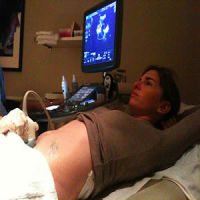EuroPRevent 2015 will explore inequalities in cardiovascular health
While death rates from heart disease in Europe have more than halved in many countries and in most population groups since the early 1980s, heart disease remains by far the leading cause of death.(1)
According to the European Cardiovascular Disease Statistics for 2012:
• Each year cardiovascular disease (CVD) causes over 4 million deaths in Europe (i.e., 47% of all deaths)
• CVD is the main cause of death in women in all countries of Europe and is the main cause of death in men in all but six countries.
• Death rates from coronary heart disease are generally higher in Central and Eastern Europe than in Northern, Southern and Western Europe, and death rates from stroke are many times higher in Central and Eastern Europe.
• According to World Health Organisation statistics(2)an estimated 17.5 million people died from CVDs in 2012, representing 31% of all global deaths. Of these deaths, an estimated 7.4 million were due to coronary heart disease and 6.7 million were due to stroke.
The implications of these figures lie behind the themes of this year's EuroPRevent congress, the world's leading forum for the presentation of new research in preventive cardiology.
EuroPRevent 2015 will take place at the Centro de Congressos de Lisboa (CCL), from 14-16 May 2015.
The event promises to be the leading event of the year in preventive cardiology and we encourage you to mark the event in your news diaries. The scientific programme contains many new reports on a subject which is traditionally of great public interest.
The congress organisers, the European Association for Cardiovascular Prevention and Rehabilitation (EACPR), have adopted as this year's theme Addressing Inequalities in Cardiovascular Health, a topic which is clearly evident in the latest health statistics and partly explained by varying degrees of response to prevention policies.
For example, as the figures from the latest European CVD statistics indicate, substantial differences in mortality rates have been found across EU member states. Mortality rates which have fallen in some age groups are now levelling off in some countries, and are even rising in young people in Greece and Lithuania. Studies have shown that interventions aimed at whole populations are the most effective. Such policies, however, are not widely implemented across Europe. In addition, the risk factor benefits gained from the control of blood pressure or cholesterol, or from initiatives to stop smoking, may well be offset by prevalence of obesity and diabetes.
Chairman of the Congress Planning Committee, Professor Johan de Sutter from AZ Maria Middelares Hospital in Ghent, Belgium, says: "The CVD death rate in developed countries is coming down but over three-quarters of deaths take place in low- and middle-income countries. If we are to learn from and be inspired by the success stories and challenges from around the world, addressing inequalities in cardiovascular health is key to help tackle this imbalance between regions, countries and even within the same city."
Several plenary sessions in Lisbon will consider such inequalities, both from a geographical perspective and as a consequence of individual risk prediction.
More than 550 abstracts of new scientific research in CVD prevention have been accepted for the congress, and many will provide much public health interest. Other scientific sessions will highlight further emerging themes and provide new evidence in established themes, some of which will be featured in press releases issued during the congress:
• On the continuing debate over the most effective intensity level of exercise
• On sports medicine and how sudden cardiac death might be prevented by screening programmes (Prof Jiří Dvořák, MD, FIFA Chief Medical Officer and Chair of the FIFA Medical Assessment Research Centre will be presenting a keynote lecture assessing whether football can impact cardiovascular prevention and rehabilitation as part of the Inaugural Session on 14 May at 18:15)
Source: ESC
Image Credit: escardio.org



























